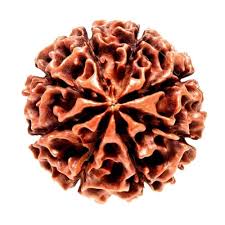If you’re wandering around the internet trying to figure out which rudraksha bead is legit, you’re not alone. Honestly, it can get confusing. There are so many sellers, claims, and miraculous benefits floating around that it feels like buying a magic bean from a street market. But don’t worry—I’ve got you covered.
One of the first things most people ask is, How much should a rudraksha 8 mukhi price cost? Well, let’s break it down in simple terms.
Understanding Rudraksha 8 Mukhi
So, an 8 mukhi rudraksha is the bead with eight natural lines or mukhis running from top to bottom. In spiritual circles, it’s believed to represent Lord Ganesha, the remover of obstacles perfect if you’re like me and somehow manage to spill coffee on your laptop weekly. People wear it to attract wealth, peace, and good vibes—basically, the spiritual version of a lucky charm.
But here’s the tricky part: not all 8 mukhi beads are created equal. Just because a seller says it’s genuine doesn’t mean it is. I’ve seen fake ones being sold at a price that would make your wallet cry.
Rudraksha 8 Mukhi Price: What’s Normal?
Now, onto the big question—rudraksha 8 mukhi price. Prices can vary a lot, depending on size, authenticity, and where you buy it. From my snooping around online forums and marketplaces, here’s a rough idea:
- Small, average-quality beads: ₹1,500–₹3,000
- Medium to high-quality beads: ₹3,000–₹7,000
- Rare or large beads with certified authenticity: ₹8,000–₹15,000+
Yeah, the range is huge. Think of it like buying coffee beans. You can get a basic pack from the local store for ₹100, or those fancy single-origin ones that make you feel like a barista for ₹1,500. Quality makes a difference.
How to Spot a Genuine 8 Mukhi Rudraksha
Here’s where things get fun. You don’t want to spend thousands only to realize it’s fake. A few simple checks:
- Water Test – Genuine beads don’t float for long. Not an exact science, but it’s a quick trick.
- Natural Lines – Look for 8 clear vertical lines; fake beads sometimes have lines carved, not naturally formed.
- Weight & Texture – Real beads feel heavier than they look and have a rough, earthy texture.
- Hole Drilling – Beads drilled by machines often look too perfect. Handmade or natural holes are slightly uneven.
Pro tip: If you’re buying online, check reviews and social media chatter. People often post videos and pictures, which is super helpful. One Facebook group I follow is full of people debating whether their beads are authentic enough — it’s like watching a reality show but for spiritual jewelry.
My Experience
I remember buying my first 8 mukhi rudraksha. I thought paying extra would guarantee authenticity. Turns out, I bought a nice-looking impostor that made me feel slightly scammed. Learned my lesson: always check for certifications or trusted sellers. That’s why links like this one are lifesavers—they give you a proper guide to identify genuine beads before spending your hard-earned money.
Final Thoughts
Rudraksha beads aren’t just spiritual accessories—they’re little investments in peace of mind, energy, and maybe a sprinkle of luck. And when it comes to the 8 mukhi, knowing the price range and how to identify a genuine one can save you a ton of headaches.

